Mar
16
2016
Brent
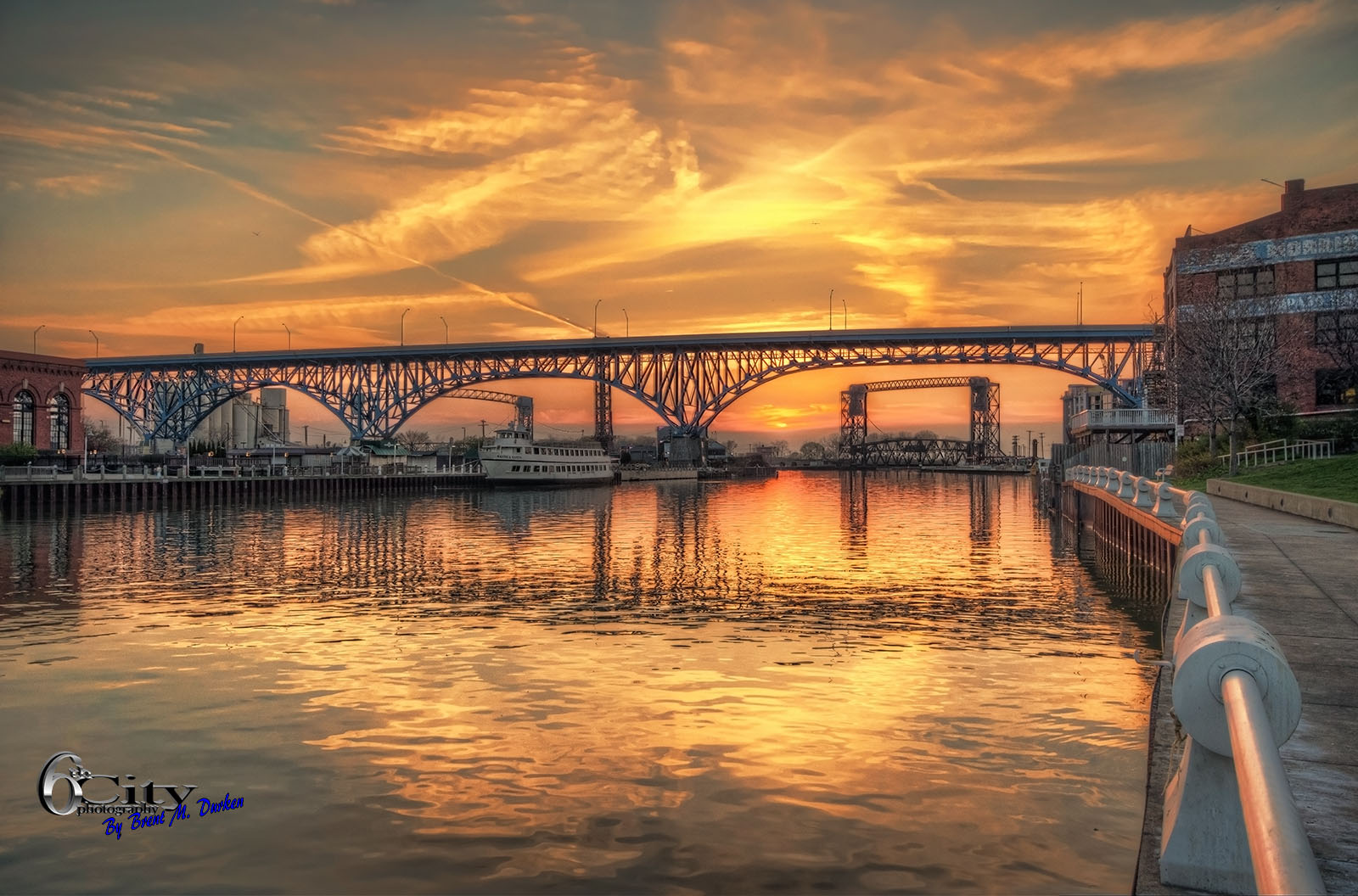
Info on the Cuyahoga River from Wikipedia: “The Cuyahoga River is famous for being “the river that caught fire,” helping to spur the environmental movement in the late 1960s. The name “Cuyahoga” is believed to mean “crooked river” from the Mohawk Indian name “Cayagaga,” although the Senecas called it “Cuyohaga,” or “place of the jawbone.” At least 13 fires have been reported on the Cuyahoga River, the first occurring in 1868. The largest river fire in 1952 caused over $1 million in damage to boats, a bridge, and a riverfront office building. On June 22, 1969, a river fire captured the attention of Time magazine, which described the Cuyahoga as the river that “oozes rather than flows”.
The 1969 Cuyahoga River fire helped spur an avalanche of water pollution control activities, resulting in the Clean Water Act, Great Lakes Water Quality Agreement, and the creation of the federal Environmental Protection Agency and the Ohio Environmental Protection Agency (OEPA). As a result, large point sources of pollution on the Cuyahoga have received significant attention from the OEPA in recent decades. These events are referred to in Randy Newman’s 1972 song “Burn On,” R.E.M.’s 1986 song “Cuyahoga,” and Adam Again’s 1992 song “River on Fire.” Great Lakes Brewing Company of Cleveland named its Burning River Pale Ale after the event. Water quality has greatly improved and, partially in recognition of this improvement, the Cuyahoga was designated one of 14 American Heritage Rivers in 1998″.
More info:https://en.wikipedia.org/wiki/Cuyahoga_River
All photos are copyright of Brent Durken – www.brentdurken.com
To purchase a digital download of this photo for your website or blog please visit: https://www.smugmug.com/gallery/n-zRG6xB/
Purchase a print of this photo: Brent Durken Print Sales
http://brent-durken.pixels.com/
no comments | tags: burning river, city, city scene, cityscape, Cle, Cleveland, Cleveland City, cleveland flats, Cleveland photograph, Cleveland photography, cleveland photos, cleveland skyline, Cleveland Skyline canvas, Cleveland Skyline prints, cuyahoga river, downtown, dynamic, erie, flats, green, hdr, high, metroparks, nature, Ohio, Photo, Photography, scenic, screensaver, sunset, Sunset on the Burning River Cleveland, urban Photography
Mar
9
2013
Brent
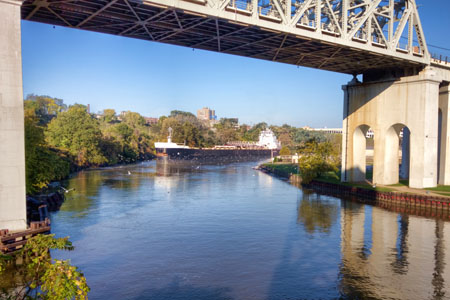
“The Cuyahoga River was a retreat from the last glaciers ever seen in the United States. It is called an “infant glacial river”, because it is young compared to all of the other rivers formed by glaciers. The river was formed about 13,000 years ago, but the Cuyahoga Valley has been there even longer. The Cuyahoga River also had a great influence on the Native Americans. The Native Americans named it “Cuyahoga” meaning “crooked river”. The Cuyahoga River also had a great influence on the Native Americans. They came as early as 200 B.C. to the Northeastern part of what is now the Ohio Valley. The Indians used the river mainly for food and transportation. They built canoes and fished along the river. The river had an abundant supply of fish as well as plants. Also, large game settled near the river. These resources made it very easy for the Native Americans to live. As the War of 1812 ended, Western settlers displaced the Indians off the Cuyahoga Valley. The Cuyahoga River was becoming a place which was rich and plentiful. Moses Cleveland founded the township of Euclid at the mouth of the Cuyahoga River in 1796. Benjamin Franklin and George Washington thought that the Northern part of what is now the Ohio would be of great importance. They knew that the Cuyahoga was the prime spot for the continental divide passing directly through and for the mouth coming out at the Lake Erie”.
For more info:
http://www.grc.nasa.gov/WWW/k-12/fenlewis/History.html
Today’s Quote: Concentration is my motto – first honesty, then industry, then concentration. – Andrew Carnegie
2 comments | tags: Cle, Cleveland, Cleveland photography, cleveland photos, cuyahoga river, downtown, dynamic, erie, green, hdr, Lake Erie, Ohio, screensaver
Dec
31
2012
Brent
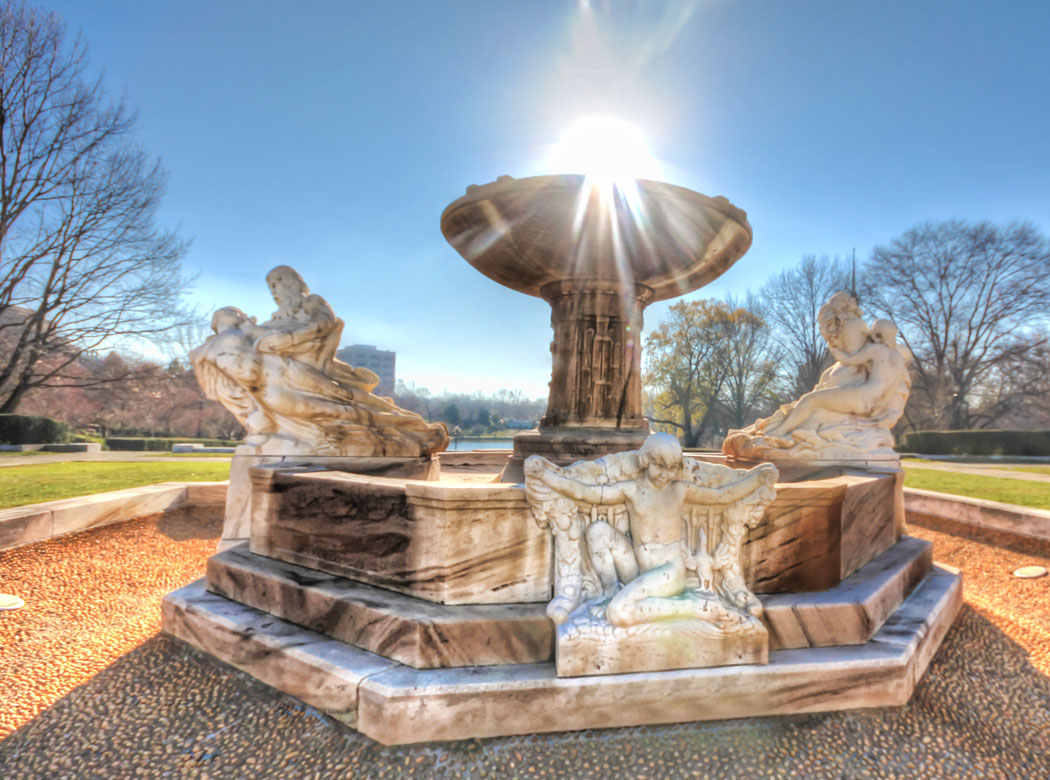
“Fountain of Waters” by Chester Beach in the Cleveland Museum of Art Fine Arts Garden
From the Cleveland museum of Art website : ” I know of no other example of landscape art as beautiful as this where such a large part of the population pass daily and enjoy it.” Frederick Law Olmsted Jr., of the Olmsted Brothers landscape architecture firm, is of course referring to the Fine Arts Garden. The garden fills the approach to the Cleveland Museum of Art from Euclid Avenue, and is bordered on the east and west by East Boulevard and Martin Luther King Boulevard, respectively. The Fine Arts Garden was formally presented to the city of Cleveland by the Garden Club at a dedication ceremony on July 23, 1928.
The Cleveland Museum of Art was built on land donated by industrialist Jeptha Homer Wade II. This land is located in Wade Park, which was donated to the city in the nineteenth century by Wade’s grandfather, Jeptha Homer Wade I. Prior to the construction of the museum, Wade Park was a popular recreation area that included a lake for boating and skating, walking paths, and picnic areas.
Construction of the museum decimated the landscape surrounding the building. For several years after the museum opened in 1916 the park was minimally maintained by the city. The unsightly bit of land between the museum and Euclid Avenue was the subject of much criticism during this time. In 1923 the Garden Club of Cleveland, whose library was housed at the art museum, appointed a committee to study the problem of beautifying the area.
Through various fund raisers garden club members were able to hire the firm of landscape architect Frederick Law Olmsted, the designer of Central Park in New York City, to design the Fine Arts Garden. These images represent the firm’s vision for the Fine Arts Garden.
In addition, members of the club, the art museum, and community at large donated funds to commission artist Chester Beach to sculpt the “Fountain of Waters” and signs of the zodiac statues. Funds also were donated for the purchase of marble benches, terraces, and other pieces of statuary for the garden. All of the funds to establish the garden, over $400,000, came from private donations. Maintenance of the garden is funded through an endowment established by Mrs. John Sherwin, president of the Garden Club at the time the garden was planned.
The Museum Archives houses records related to the planning and construction of the Fine Arts Garden including records of the Fine Arts Garden Commission, records from the Olmsted Brothers firm, planting plans and blueprints, and photographs. For more information, see the Records of Fine Arts Garden finding aid.”
For more info: www.clevelandart.org/collection-focus-article/fine-arts-garden
Today’s Quote: The best thing about the future is that it comes only one day at a time.” – Abraham Lincoln
no comments | tags: Chester Beach, city, Cle, Cleveland, cleveland museum of art, Cleveland photography, cleveland photos, culture, downtown, Fine Arts Garden, Fountain of Waters, gardens, green, hdr, Photo, Photography, screensaver, Wade Park
Aug
15
2012
Brent

The Cleveland Cultural Gardens are a collection of public gardens located in Rockefeller Park in Cleveland, Ohio. The gardens are situated along Martin Luther King Jr. Drive within the 276 acre of wooded parkland on the city’s East Side. In total, there are 31 distinct gardens, each commemorating a different ethnic group whose immigrants have contributed to the heritage of the United States over the centuries, as well as Cleveland.
For more info:
http://en.wikipedia.org/wiki/Cleveland_Cultural_Gardens
http://www.culturalgardens.org/
3 comments | tags: background, city, Cle, Cleveland, cleveland cultural gardens, culture, gardens, green, hdr, Ohio, Photo, Photography
Aug
7
2012
Brent
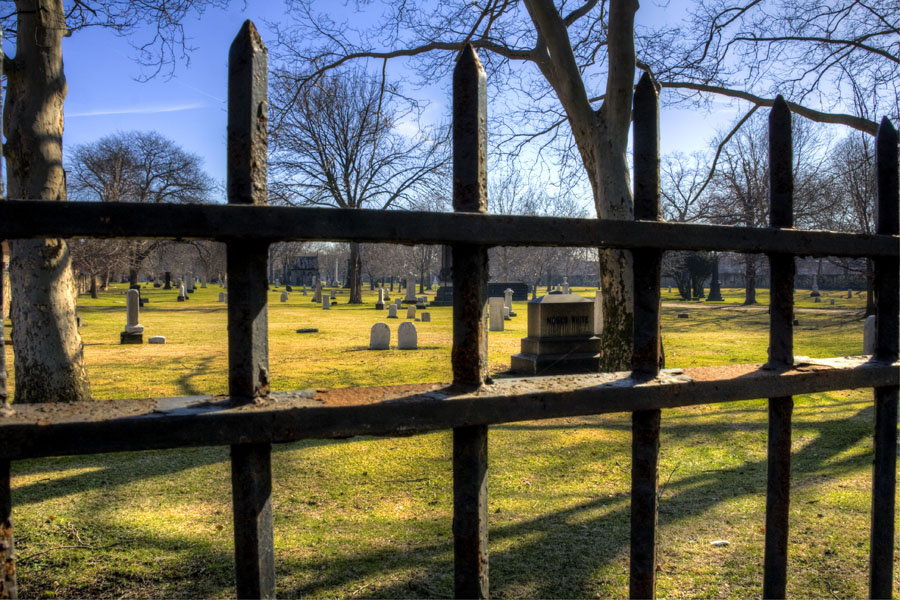
From The Encyclopedia of Cleveland History:
“ERIE ST. CEMETERY, preserving E. 9th St.’s original name, has been a municipal cemetery of controversy since 1826. Cleveland village trustees, desperate to replace the informal community burial ground south of Public Square with a permanent site, purchased the location for $1 from Leonard Case. So remote and spacious was the land that the council permitted a gunpowder magazine (1836) and a poorhouse-hospital on the unused portion. Disgruntled heirs of the original lot owners, claiming infringement of a covenant restricting use to burials, fruitlessly sued Cleveland in federal court (1836-42).For Progressives, beginning with Mayor Tom Johnson the cemetery mocked an efficient city. His administration, which developed Highland Park Cemetery (1904), reinterred bodies there, not without opposition, and reclaimed land from Erie St. for city streets. The struggle resulted in the Pioneers’ Memorial Assn. (1915), which was influential in the decision of City Manager William Hopkins in 1925 to build the proposed Lorain-Carnegie Ave. Bridge around rather than through Erie St. Cemetery. Following this, serious attempts to remove the cemetery ended. Complaints of neglect inspired WPA action, including erecting a fence fashioned from the demolished Superior Ave. viaduct’s sandstone. In 1940 the refurbished cemetery of historic graves, including that of Sauk Chief , was rededicated.”
For more info: http://ech.case.edu/ech-cgi/article.pl?id=ESC
“On the recollection of so many and great favours and blessings, I now, with a high sense of gratitude, presume to offer up my sincere thanks to the Almighty, the Creator and Preserver. “- William Bartram
no comments | tags: city, Cle, Cleveland, downtown, dynamic, erie, Erie Street cemetery, green, hdr, high
Jun
1
2012
Brent
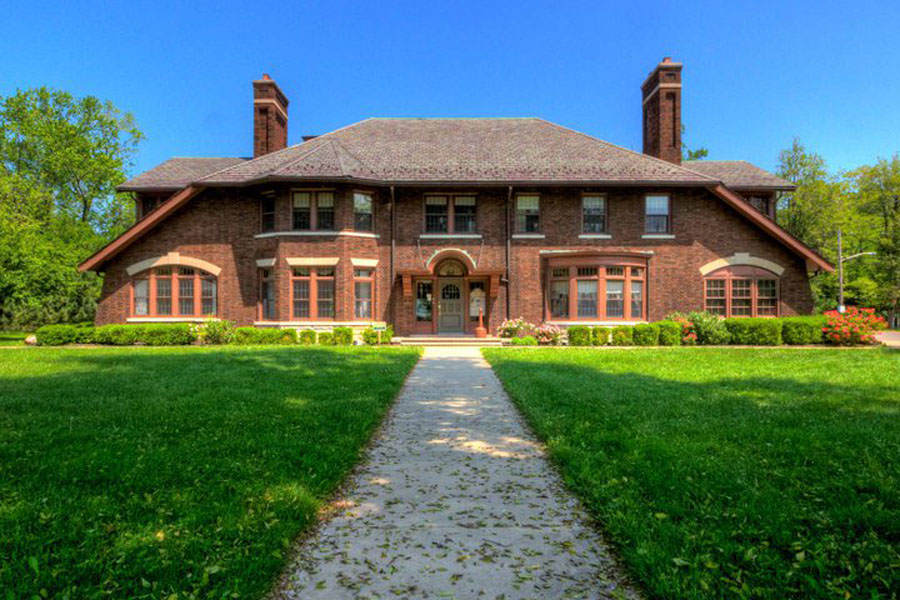
The Henn Mansion is one of those treasures that more Clevelanders need to know about. It is vaguely Tudor Revival in style with Bungalow/Craftsman overtones. It is a beautiful home and thanks to some wonderful volunteers it is still around to be enjoyed today. You can even rent it out for special occasions.
From the Henn Mansion Website:
Albert W. Henn was born at New Britain, Connecticut, January 26, 1865. His parents were Francis A. and Barbara Wilhelmy Henn. His father was born at Baden, Baden, Germany, April 1, 1825, came to America a political refugee in 1859. He was a gunsmith by trade and after coming to New Britain found employment in some of the big
hardware manufacturing houses, notably the firm of Russell & Erwin and Landers, Frary & Clark.
Albert W. Henn went to school until he was thirteen years of age completing the eighth grade. The boy went into the factory of Landers, Frary & Clark, covering a period of four years. At the age of nineteen he came to Cleveland and here secured a position as entry clerk with the wholesale dry goods house of Root & McBride, where he remained for thirteen years. During this period he had, apparently, little use for the mechanical knowledge he had secured in his boyhood, but when the opportunity came he found himself thoroughly interested and quite able to apply it.
Mr. Henn was married in Cleveland, April 17, 1889, to Miss Gertrude Jeannette Bruce, and they had six children, their first two sons, Jesse and William died in infancy
leaving three sons and one daughter surviving. Edwin C., a graduate of Cornell University; Howard R. a graduate of Yale University, Jeannette, a graduate of Vassar College; and Robert B a graduate of Cornell University.
Mr. Henn and his brother E. C. Henn patented the Multiple Spindle Lathe, (EC’s invention) which revolutionized the machine tool industry. Then they organized the Acme Machine Screw Company, with E. C. Henn as president and Albert W. Henn as secretary and treasurer. In 1902 they merged their enterprise with the National Manufacturing Company of Cleveland and changed their caption to the National-Acme Manufacturing Company.
Mr. Henn became Secretary of the concern at that time (1908), became treasurer, and was elected president in 1918. He was also treasurer and a director of the Maynard H. Murch Company, investments; president of the Goodhold Farm Company, vice president of the Ohio Muck Farm Company, and a director in the Lincoln Electric Company and the Winton Hotel Company.
For more photos inside the Henn Mansion:
http://www.hennmansion.org/
Today’s Quote: “Believe in yourself! Have faith in your abilities! Without a humble but reasonable confidence in your own powers you cannot be successful or happy”. – Norman Vincent Peale
no comments | tags: Albert Henn Mansion, Albert W. Henn, Albert W. Henn Mansion, city, Cle, Cleveland, culture, downtown, dynamic, erie, euclid, euclid mansions, green, hdr, high, Lake Erie, mansion, nature, Ohio, Photo, Photography, screensaver
May
4
2012
Brent
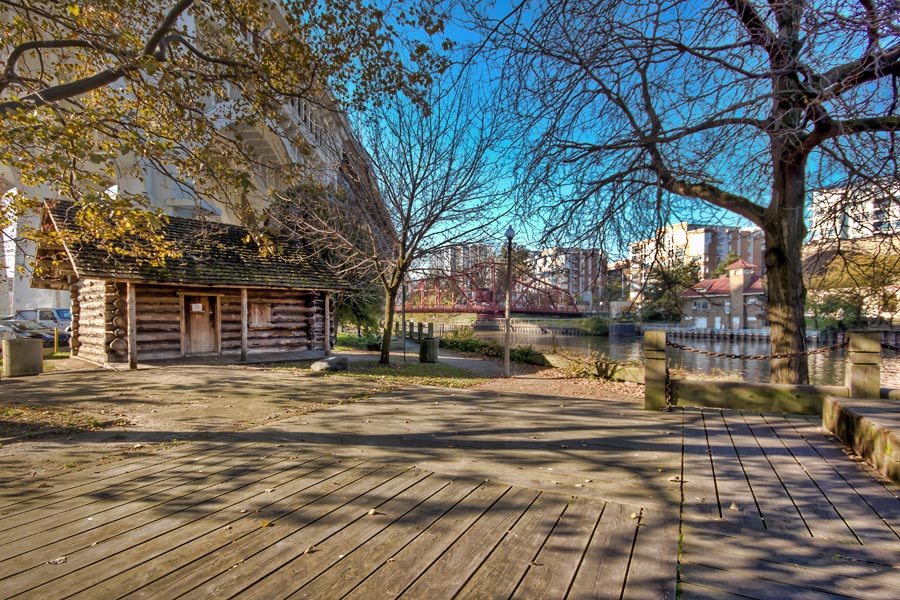
Settlers Landing Park represents the spot that Moses Cleaveland led a surveying team to in 1796. This park is located on the Eastern bank of the crooked Cuyahoga River in the Flats.
For more info: http://www.examiner.com/article/cleveland-s-settlers-landing
Today’s Quote: Exploration is really the essence of the human spirit. – Frank Borman
no comments | tags: 6th city, background, city, Cle, Cleveland, culture, cuyahoga river, downtown, erie, green, hdr, high, Ohio, Photo, Photography, screensaver, Settlers Landing, Settlers Landing Park
Mar
21
2012
Brent

Giraffes can grow to 18 feet tall and are the largest living mammals on earth. These two beautiful animals can be found in the African Plains at Cleveland Metroparks Zoo.
For more info: http://www.clemetzoo.com/animals/index.asp?action=details&animals_id=1045
Today’s Quote: “God is really only another artist. He invented the giraffe, the elephant and the cat. He has no real style, He just goes on trying other things”. – Pablo Picasso
no comments | tags: Cle, Cleveland, cleveland metroparks zoo, cleveland zoo, culture, dynamic, giraffe, Giraffes, green, hdr, metroparks, Ohio, Photo, Photography, zoo
Mar
20
2012
Brent
 Spring in Cleveland
Spring in Cleveland
Spring time has officially arrived in Cleveland! Normally that doesn’t mean much because it’s still 40 degrees outside along with clouds and rain. This year however is different because it has been absolutely beautiful outside with record setting temperatures. Make sure to go outside and enjoy the weather and the flowers.
Today’s Quote: “Earth laughs in flowers”. – Ralph Waldo Emerson
no comments | tags: background, Cle, Cleveland, culture, downtown, dynamic, green, hdr, high, metroparks, nature, Ohio, Photo, Photography, ralph waldo emerson, scenic, screensaver, Spring in Cleveland, tulip
Mar
19
2012
Brent
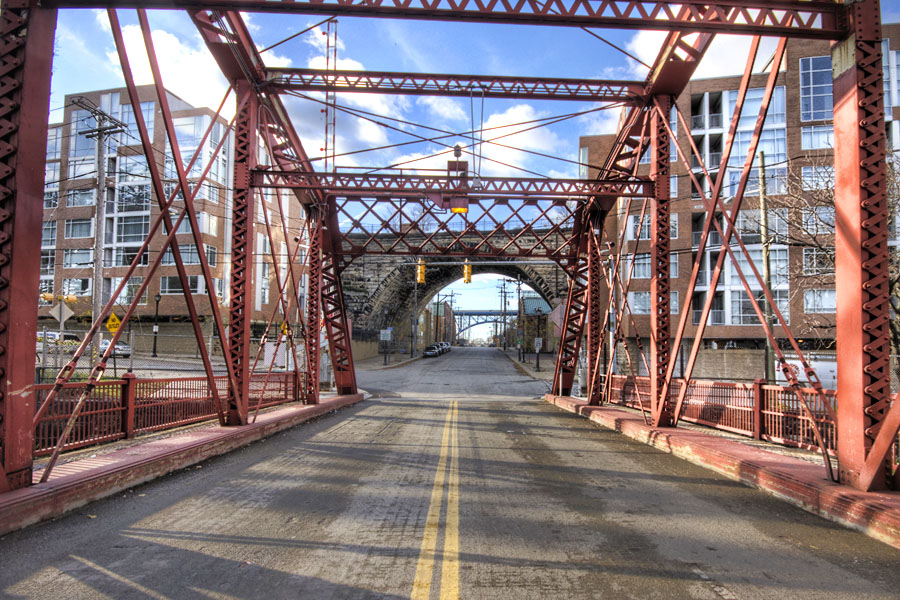
Today’s photo is of the Center Rd. swing bridge. Built in 1901 by the King Bridge Co., this is the last remaining swing bridge in Cleveland. For more info on this important landmark please visit:
http://www.historicbridges.org/ohio/center/
Today’s Quote: “A politician is a man who will double cross that bridge when he comes to it”. -Oscar Levant
no comments | tags: 6th city, background, bridge, Center Road, Center Road Swing Bridge, city, Cle, Cleveland, cuyahoga river, downtown, dynamic, green, hdr, Ohio, Photo, Photography, range, screensaver, stone bridge, Swing Bridge









